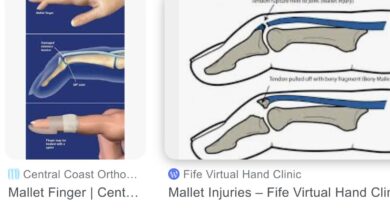CARPAL TUNNEL SYNDROME: Why is My Hand Numb?

Carpal tunnel syndrome (CTS) is a social disease! By social disease I don’t mean it in the classic sense. It isn’t a disorder related to interpersonal relationships or human interaction and conflict. No, carpal tunnel syndrome, in my mind, is a reflection of the stresses of everyday life and our over-dependence and over-use of electronic devices. Smart phone, computer tablet, personal data assistant, and personal computer mouse use has overstressed our hands, thumbs, and fingers and resulted in an increased incidence of carpal tunnel syndrome.
The incidence and prevalence of CTS in developed countries seems to be similar to that of the United States where 1-3 cases per 1000 patients a year are diagnosed. In developing countries such as those in Africa, CTS is almost unheard of. This, again, speaks to the frequent use of electronic devices in countries whose populace is more educated and affluent, and the lack thereof in third world societies. Long term repetitive motion of the wrist occurs in so many occupations and activities in our society that CTS has almost become epidemic. Typists, pianists, professional artists, violinists, assembly line workers, seamstresses, butchers, and not surprisingly those who hold their cell phones to talk and text are susceptible to CTS. Women are three times more likely than men to get CTS, and it almost exclusively an adult disorder.
Contributing to the development of CTS are a host of other conditions. Trauma (fracture, sprain) to the wrist, rheumatoid arthritis, pregnancy, menopause, diabetes, thyroid problems, and obesity all can cause swelling of the wrist that leads to carpal tunnel. That laborer who runs a jackhammer or uses vibrating hand tools is a sure bet to have it eventually.
I discussed CTS briefly in the “Hand Injuries” blog, but to better understand it we need to review the neuroanatomy of the wrist and hand. The carpal tunnel is a rigid, ligamentous sheath in the palmar surface of the wrist through which the median nerve runs. The median is the middle nerve of the three nerves of the hand. The radial nerve supplies sensation and motion to the top surface of the thumb, index, and middle fingers and runs through the thumb side of the wrist. The ulnar nerve supplies the ring and fifth fingers on both surfaces. The median nerve supplies sensation to the thumb, index and middle fingers on the palmar surface. It’s the median nerve that becomes trapped and compressed in the carpal tunnel in the wrist causing pain, numbness, tingling, and weakness of the three fingers it supplies.
Persistent compression of the median nerve causes the above symptoms as well as weakness. The patient feels like his thumb and index finger are always asleep. CTS patients have difficulty using their thumb and index finger for picking up objects or buttoning buttons. They waken at night with numbness and pain. They find it difficult to recognize objects placed in their hands with their eyes closed. As time passes these changes persist and worsen leaving the median nerve permanently damaged.
Diagnosis is based on history and physical exam. The patient’s grip is weak, thumb and index finger apposition is weak, and tapping on the palmar surface of the wrist causes tingling in the areas supplied by the median nerve (positive Tinel’s sign). But a definitive diagnosis is made by an EMG (electromyogram) and nerve conduction study (NCS). In this study, the median nerve is stimulated by electric current to see if the current passes through the nerve. In CTS, the transmission of the electrical impulse is blocked by the nerve compression. Therefore, no evidence of nerve activity or finger movement is recorded indicating the nerve is compressed. EMG’s are very reliable in making an accurate diagnosis.
Treatment consists of immobilizing the wrist with a splint thus resting the nerve and wrist. Oral anti-inflammatory drugs or a shot of cortisone into the carpal tunnel helps reduce nerve swelling and narrowing of the canal. When these treatments fail, and an EMG clearly shows loss of nerve conduction, surgery is indicated. Here, a small incision is made in the wrist, the carpal tunnel sheath is exposed, and the sheath is incised to allow release of the nerve.
Preventing carpal tunnel syndrome is the best approach. Stretching exercises, frequent rest breaks, correct posture and wrist position, rotating jobs among employees, and on-the-job conditioning are all ergonomic processes employers and employees can use effectively. Of course, the rest of us should put aside our smart phones, tablets, and computer mice and give our wrists a rest. We could all benefit from that in more ways than just preventing CTS. Social interaction would return to the way it was before smart phones and tablets, and we may actually talk to one another face-to-face.
References:
ninds.nih.gov/Disorders/Carpal-Tunnel-Syndrome
aans.org/Patients/Neurosurgical-Conditions/Carpal-Tunnel-Syndrome




